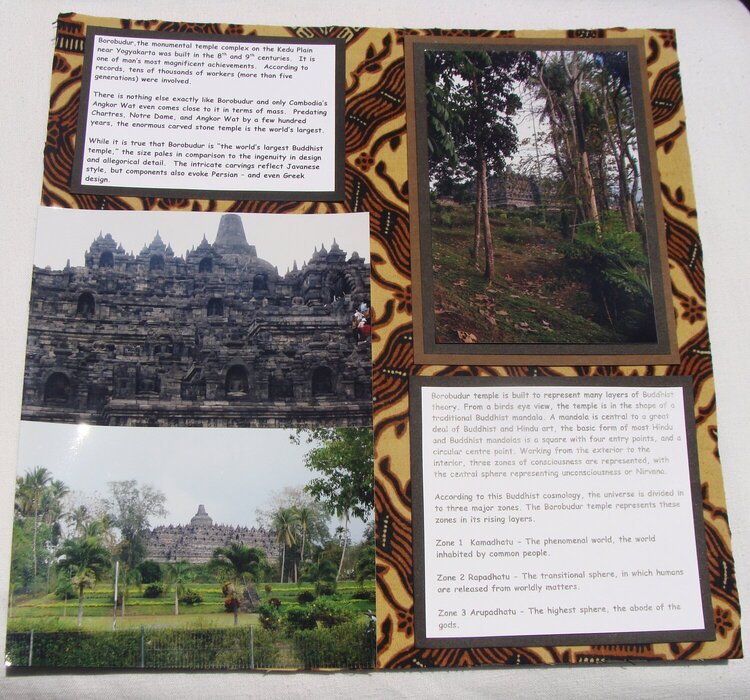

 Give a Cheer
Give a Cheer
Borobudur,the monumental temple complex on the Kedu Plain near Yogyakarta was built in the 8th and 9th centuries. It is one of man's most magnificent achievements. According to records, tens of thousands of workers (more than five generations) were involved.
There is nothing else exactly like Borobudur and only Cambodia's Angkor Wat even comes close to it in terms of mass. Predating Chartres, Notre Dame, and Angkor Wat by a few hundred years, the enormous carved stone temple is the world's largest.
While it is true that Borobudur is “the world's largest Buddhist temple,” the size pales in comparison to the ingenuity in design and allegorical detail. The intricate carvings reflect Javanese style, but components also evoke Persian – and even Greek design.
Borobudur temple is built to represent many layers of Buddhist theory. From a birds eye view, the temple is in the shape of a traditional Buddhist mandala. A mandala is central to a great deal of Buddhist and Hindu art, the basic form of most Hindu and Buddhist mandalas is a square with four entry points, and a circular centre point. Working from the exterior to the interior, three zones of consciousness are represented, with the central sphere representing unconsciousness or Nirvana.
According to this Buddhist cosmology, the universe is divided in to three major zones. The Borobudur temple represents these zones in its rising layers.
Zone 1 Kamadhatu - The phenomenal world, the world inhabited by common people.
Zone 2 Rapadhatu - The transitional sphere, in which humans are released from worldly matters.
Zone 3 Arupadhatu - The highest sphere, the abode of the gods.
No products have been added to this project.
Thanks for spreading positivity!
August 09, 2012
July 31, 2012
July 08, 2012
July 07, 2012
July 06, 2012